Early Test Lab
| As a power to eliminate waste the establishment of standards for materials, machinery, and construction is recognized by modern business institutions. In order to have standards, methods by which the fidelity to these standards can be determined must be provided. The management of the Bureau of Power and Light foresaw this trend of modern business and from the very beginning created standards for materials and construction. A means of checking on these standards was provided for by the creation of a department devoted to testing.^ |
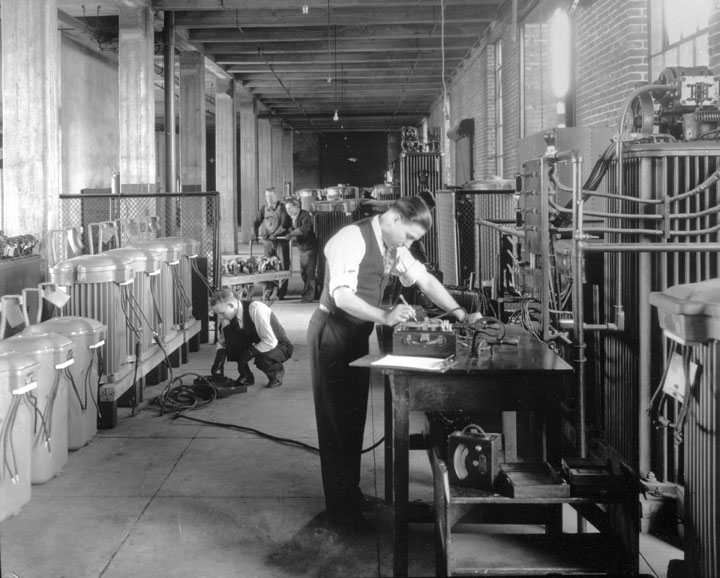 |
|
| (1930)* - Test Lab technicians test incoming new transformers to ensure they meet standards. |
Historical Notes Back in 1917, J. C. Albert was placed in charge of this branch of the work, as Superintendent of Tests. Starting with a few employees this section expanded and broadened its scope of activities under the name of the Testing Laboratories. In 1930, It employed approximately ninety people and was engaged in testing work in widely diversified fields. |
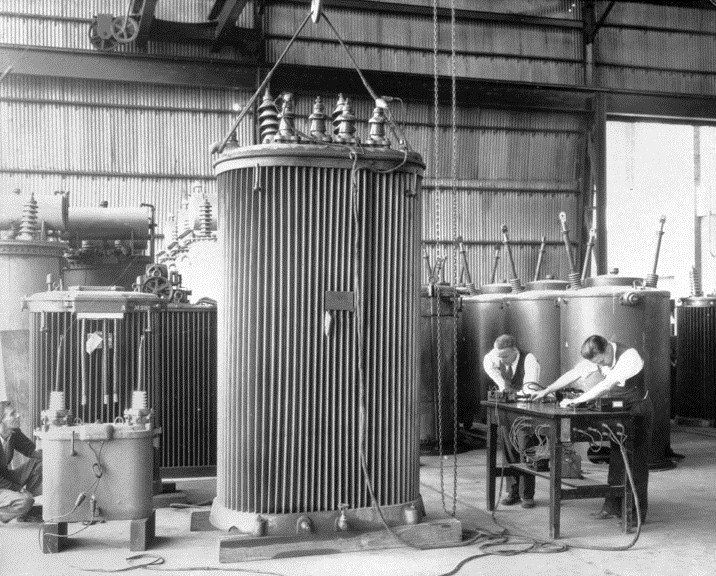 |
|
| (1932)* - Large transformer being tested at Testing Laboratory. |
Historical Notes The Bureau was constantly adding new specifications for materials and standards for construction. The purpose of the Laboratories was to ensure that all specifications are complied with. The Laboratory facilities permitted analysis and tests of almost any kind of material or apparatus. Personal inspection of materials was occasionally made at the factory during manufacture, and a force of men engaged in maintenance tests of apparatus were constantly at work in the field. Machinery and materials representing large investments which fail in service would involve losses to the Bureau aggregating many times the slight cost of preliminary testing, testing which would have made it possible to prevent such a failure. Testing practiced scientifically eliminated the hazards and losses caused by inferior quality of materials and machinery, failures in service, waste, and delays which may, in many cases run into enormous sums and possible loss of life.^ |
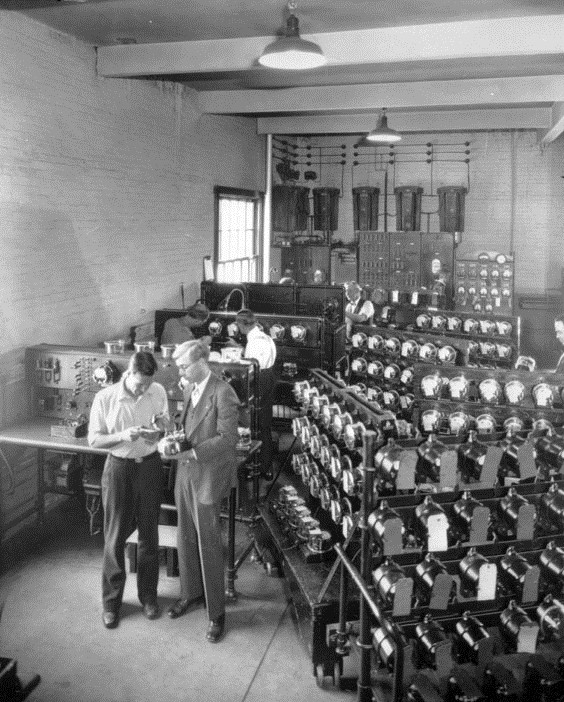 |
|
| (1930)* - Electric meters at the Testing Laboratory. |
Historical Notes The largest single activity of the Laboratories was that of the Consumers Test branch in maintaining, calibrating, and testing of the 260,000 electric meters the “cash registers of the electric system” in homes, stores, and industrial plants throughout the city. Approximately fifty thousand meters were tested annually in this branch of the work alone. Along with this activity a complete Testing service was maintained for the benefit of the Bureau of Power and Light consumers without cost to them, but paying the Bureau large dividends in good will.^ |
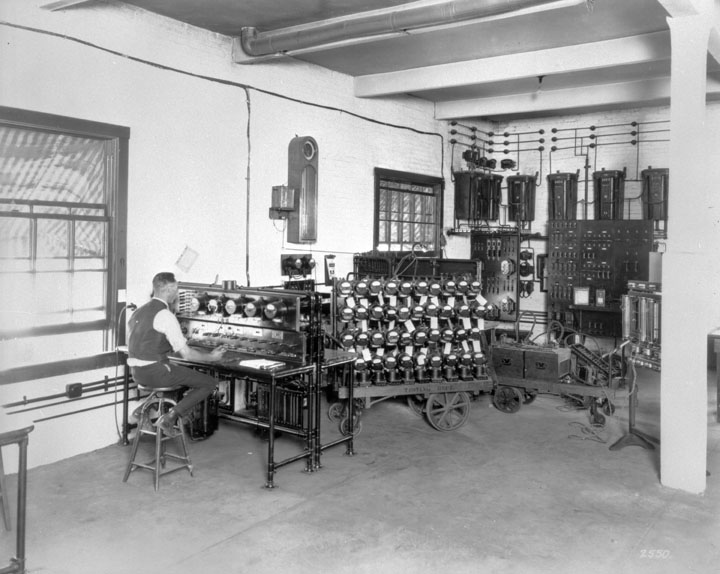 |
|
| (1930)* - Routine meter testing at the General Laboratory. |
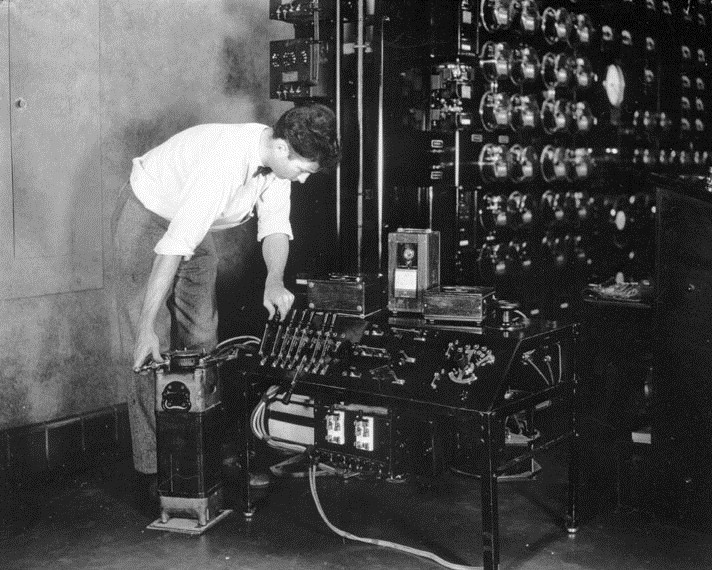 |
|
| (1930)* - Testing switches at the Testing Laboratory. |
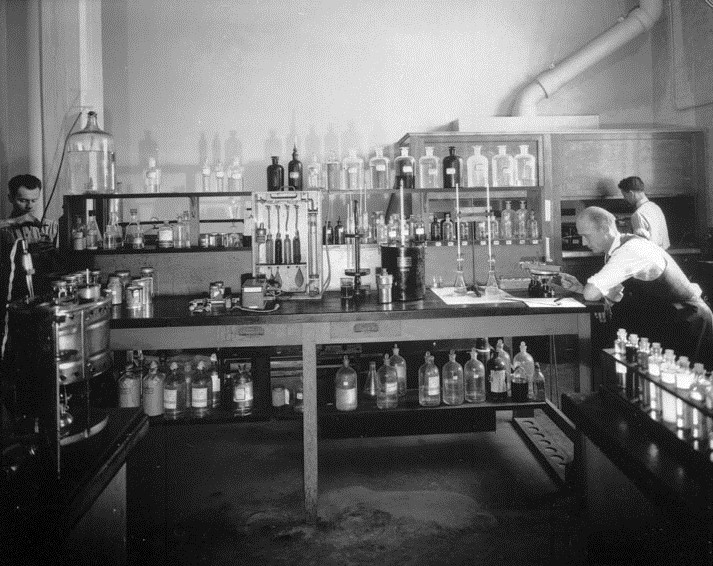 |
|
| (1930)* - Chemical section at the Testing Laboratory. |
Historical Notes The original purpose of the laboratory was to check materials for compliance with specifications while research work was to fit in when times were dull.^ |
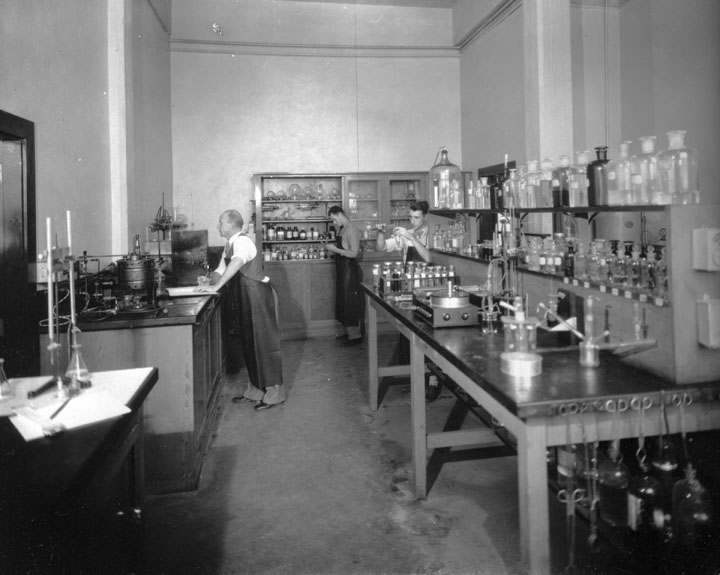 |
|
| (1932)* - Everyday scene in the Chemical Laboratory of the Testing Laboratories. Left to right are: A. R. Fox, chemist; Kenneth Withey, and John Baer, assistants. |
* * * * * |
References and Credits
* DWP - LA Public Library Image Archive
< Back
Menu
- Home
- Mission
- Museum
- Mulholland Service Award
- Major Efforts
- Board Officers and Directors
- Positions on Owens Valley and the City of Los Angeles Issues
- Legislative Positions on
Water Issues
- Legislative Positions on
Energy Issues
- Recent Newsletters
- Historical Op Ed Pieces
- Membership
- Contact Us
- Search Index